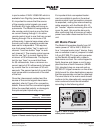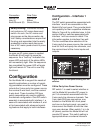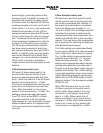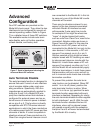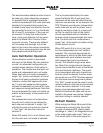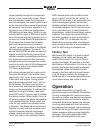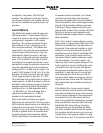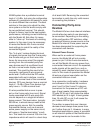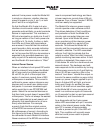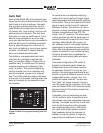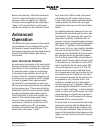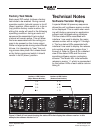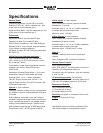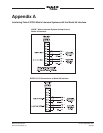
Issue 2, September 2007 Model 46 User Guide
Page 22 Studio Technologies, Inc.
ADAM system has a published nominal
level of +8 dBu, but using its configuration
software it’s possible to set panels or ports
to a level different than nominal. The best
solution in this case is to adjust the inter-
com system so that its levels comply with
its own published nominal. This should,
at least in theory, lead to the best system
performance, including correct interfacing
with the Model 46. But often it’s impos-
sible to “clean up” the levels of a existing
system. In this case it may be necessary
to revise the Model 46’s 4-wire nominal
level settings to match the reality of the
connected signals.
The “to 4-wire” meters display the level
of signals that come from the 2-wire party-
line circuits and go out the 4-wire inter-
faces. An issue may arise if the signals
coming from the connected party-line
user devices aren’t at a sufficient level
so that a normal meter display can be
reached. This could be the result of an
incorrectly configured 2-wire nominal
audio level. Confirm that the DIP switch,
associated with each interface, is set to
match the nominal level of the connected
devices. RTS user devices have a nominal
level of –10 dBu; Clear-Com devices typi-
cally have a –14 dBu nominal level.
It’s also possible that an error is pres-
ent on the 2-wire party-line circuit. Signal
levels associated with 2-wire party-line
circuits depend on a single termination
being present. This termination, typically
200 ohms, is almost always made at the
power supply source. But it’s possible
that another device, such as a second
active power supply on the same circuit,
will cause a “double-termination” condi-
tion. This leads to a nominal 100 ohm line
impedance which will result in a level drop
of at least 6 dB. Removing the unwanted
termination is really the only valid means
of correcting the problem.
Connecting Party-Line
Devices
The Model 46’s two dual-channel interface
circuits allow two sets of user devices to
be connected. Depending on the setting
of the configuration DIP switches, either
an external intercom power source or the
Model 46’s internal 2-wire power source
has been designated for supporting the
connected user devices.
External Power Source
When set for an external 2-wire power
source, the Model 46 will not provide
power on pin 2 of the 2-wire connectors,
nor will the Model 46 use any power from
a connected intercom circuit. As expected,
audio signals will be sent from, and re-
ceived by, each interface’s two audio cir-
cuits. In this mode of operation the Model
46 acts as a typical user station on the
connected intercom circuit.
As a connection confirmation, hardware
and software in the Model 46 monitors
pins 2 and 3 of the 2-wire PL intercom
connectors for the presence of DC volt-
age. A level greater than approximately
18 volts DC on pin 2 will cause the status
LED labeled pin 2 to light. A level greater
than 18 volts DC on pin 3 will cause the
pin 3 status LED to light.
The author is aware that user intercom
devices almost always draw power from
pin 2 rather than pin 3. However, in many
broadcast applications, power is provided
on all intercom paths so that flexible chan-
nel assignments can be made. In the




